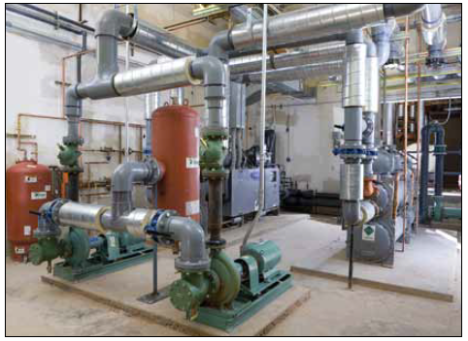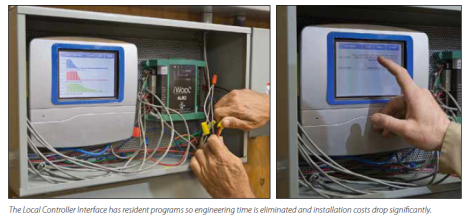When the owners of Tanque Verde Apartments in Tucson decided to upgrade mechanical systems, they made it clear that they wanted a dramatic shift from old to new. Until recently, the 15 acre, 428-unit complex has met the heating and cooling needs of the tenants, but with little regard for the amount of energy consumed in the process.
When the apartments were built 30 years ago, energy efficiency wasn’t exactly the main focus. After all, the price for gas and electricity was a fraction of today’s rate.
At Tanque Verde, an enormous district system heated and cooled all the apartments. Last year, the hydronic system began leaking underground. Tenants complained about lack of controllability while repair bills accumulated. Making matters worse, the equipment was outdated, bandaged and in desperate need of replacement.
Keeping it all In-House
When it comes to overhauling colossal mechanical systems, the Scotia Group Management LLC was quick to embrace the idea of a retrofit. Their mechanical contractor Oracle Control Systems, Inc. (OCSI) designed and installed all new hydronic heating and cooling equipment, solar-thermal DHW system, modular building automation controls, and large photovoltaic arrays to bring Tanque Verde out of the mechanical Stone Age.

“We’ve re-piped several properties in the summer without displacing tenants” Mo Forrey, owner of Oracle Control Systems, Inc. (OCSI).
OCSI crews tore out and replaced boilers, chillers, and underground hydronic lines. The two original mechanical buildings were kept; the smaller on the north side of the complex, and the larger on the south. Since none of the tenants could be displaced, OCSI installed parallel piping throughout the property while keeping the existing system on-line. Temporary chillers, boilers and piping were employed to maintain service.
On the north side of the complex, a similar approach was used. The mechanical building had a large atmospheric boiler and three vertical water heaters for DHW, all of which were removed. Now the building houses two, 1,000 MBH gas boilers and one large chiller. Hydronic demands for the smaller system are 140 GPM on the heating side, and 280 GPM for cooling. Each mechanical building is outfitted with a Taco iWorx boiler control module (BLMC). Each module can monitor and control up to four boilers, as long as the boilers are serving a common load.
Read more about the building management systems in the next part of the blog. Until then!
Filed under: Sustainable Building Design |








Join a conversation!